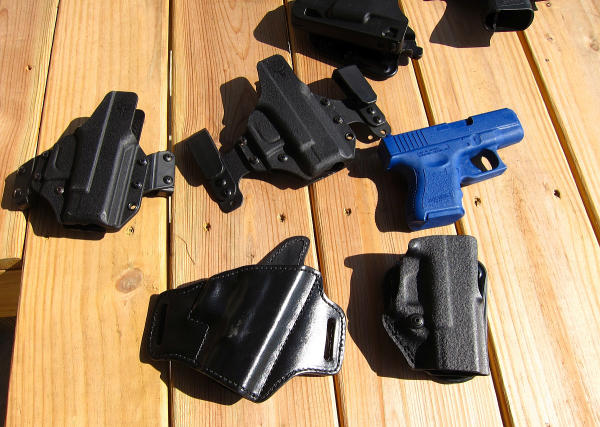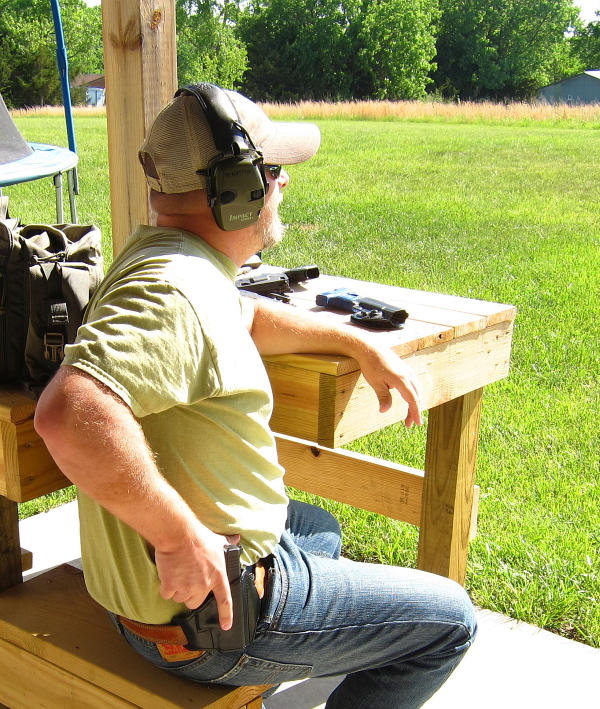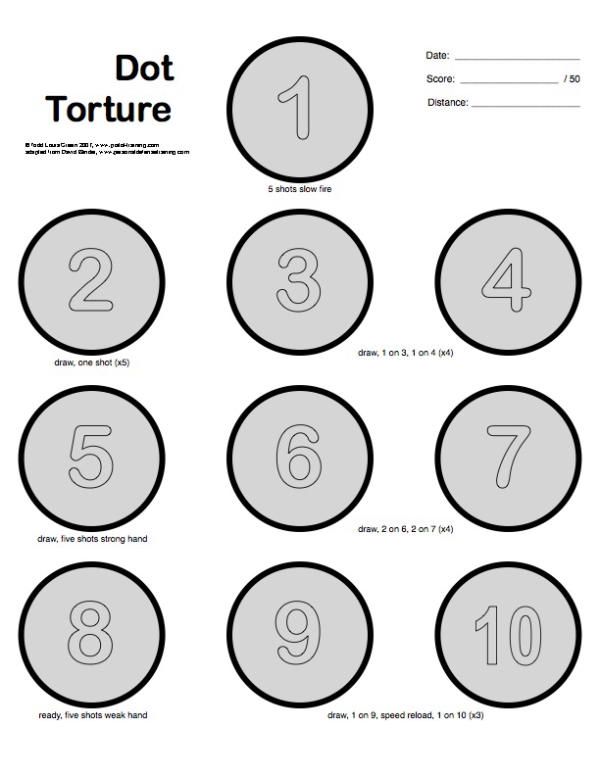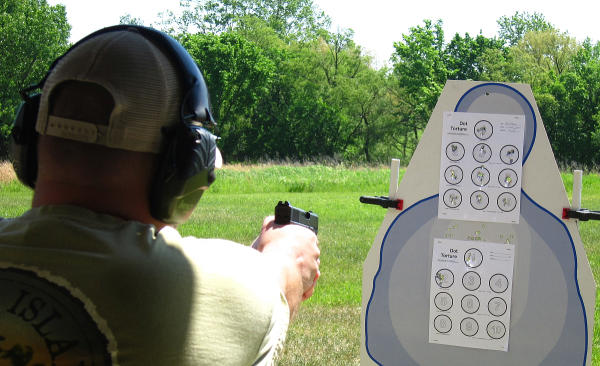
A young investigator with about 17 years of law enforcement experience recently contacted me regarding holster selection for his small investigative agency. He was interested in some input. I went to see him, saw his selection of holsters acquired for test and evaluation and we discussed the selection protocol.
It’s nice when people supply material for our editorial needs. It’s even better when I get to see how someone else thinks and examines the process used for equipment evaluation.
He asked me out to take a look at the holsters being evaluated and to tell me what he’d done to get the process started.
The Problem
It’s a very small investigative agency. When he started, the pistols issued were large, issued with bulky holsters and were seldom carried. He took to carrying a smaller pistol, a Glock 27, and agency staff took notice. The agency changed guns – ultimately to the Glock 26 – but issued ankle holsters.
The agency mission largely covers financial crimes and needing firearms for enforcement activities within their likely scope of operation is remote; that said, they operate in a capitol complex, go to privately owned public locations which can be quite crowded and travel about the state. The most likely need for a deadly force response will be in the event the investigator is confused for a potential robbery victim or a mass casualty event in a public venue.
Considering the alleged reasoning behind the current FBI qual – less for operational activities than for the likelihood that the agent would be robbed in a parking lot – the ankle holster is a non-starter.
One holster that meets a range of needs and goes with the compact nature of the issued guns was desirable. Simplicity was likewise considered to be an asset. A test holster that offered some flexibility will be rejected due to a user messing up when changing the use of the holster from inside –to- outside the waist.
Sometimes we have to meet the lowest common denominator.

Testing
A lot of holster testing is properly wear testing. Like a garment, the holster is meant to be worn and if the users don’t find it comfortable it’s less likely they’ll wear the gun when needed.
Yes, I know. It’s supposed to be “comforting” not “comfortable.” Not all users are like us; some will use any excuse not to carry the gun and, organizationally, it’s best to play to that perceived need if that’s what it takes to get the job done.
Would a “non-hacker” be likely to prevail in a fight?
Maybe not, but let’s fight this one battle at a time.
The main evaluator wore each rig on the job, when off-duty, during training and when attending non-police, “family” type events – some of these in “non-permissive environments.” It’s lawful for him to wear at these locations, but the discomfort would be loud, long and likely to reach his bosses.
Other investigators wore the holsters, provided input, as well.
The difference between the holster and “other garments” is that the holster provides a critical function, carrying defensive firearms.

Our evaluator selected the Dot Torture drill from pistol-training.com. It is somewhat holster-intensive, as well as being a premier drill for practice of trigger control and focus. I was aware of DT, had never fired it. Our evaluator invited me to shoot it, then he performed the test from one of the T&E holsters.
The Holsters
All holsters and carry methods are compromises: no one carry method or holster will meet all possible needs. Some gear gets a really bad rap from internet experts who miss the point of the designs – to properly evaluate the holster, you have to foresee how it’s most likely to be used. You also have to “train around” whatever short-comings there are.
Three holsters from Safariland/Bianchi and one from Blade-Tech were being tested. I wasn’t privy to the discussions which lead to these prospective choices.
The Bianchi Model 126 Assent open-top high-ride holster was being worn by the evaluator during my visit. It is low-profile, contoured to the body and is reminiscent of the Roy Baker “Pancake” style: the leading slot is well in front of the holster pouch, the trailing slot well behind. The tension of the belt pulls the rig in tight, pulling the pistol frame into the body. The holster features a trigger guard detent which helps ensure secure carry during normal or rigorous activity. The holster is made of a combination of leather and synthetic materials for strength and rigidity.
The simplicity of the holster, its lack of versatility is actually an asset for the likely use and users in this case. It’s also a very good holster.
The Safariland Model 7378 7TS Holster is one of their superb “auto locking system” (ALS) holsters tested by our small agency. Fast and simple to use as an open-top design, the ALS secures the pistol automatically as it’s holstered, yet still allows a fast draw with the swipe of the thumb release as the shooter gains a shooting grip. The SafariSeven nylon material is durable and temperature resistant.

The evaluator also received a Safariland Model 5198, an open-top rig designed for concealed carry. A trigger guard detent and adjustable tension device secure the gun in the thermoformed SafariLaminate holster. This can be worn with the (supplied) belt loop attachment or the paddle.
The evaluator also had a pair of Blade-Tech Total Eclipse Holsters. Pancake-style polymer holsters, the Total Eclipse is a great option for a single individual with multiple combinations of wear available in one rig. It can be worn inside the waist or outside. The cant can be adjusted. Using the IWB conversion also makes it a “quick off” holster, if that feature is needed, as the holster clips over the belt. It also makes the holster very discreet.
Retention can be adjusted, the lock is on the trigger guard and the holster includes loops for 1.5” belts.
The testing isn’t over so I can’t report results. The needs of the agency are largely comfortable discreet carry with quick access and less battlefield durability and gun-grab prevention.
The process interests me; it’s more “how you found the answer,” than “what is the answer?” We’re currently working on a reader question about secure concealed carry for those who don’t wear belts – another interesting problem.
We’ll keep you posted.![]()
- - Rich Grassi